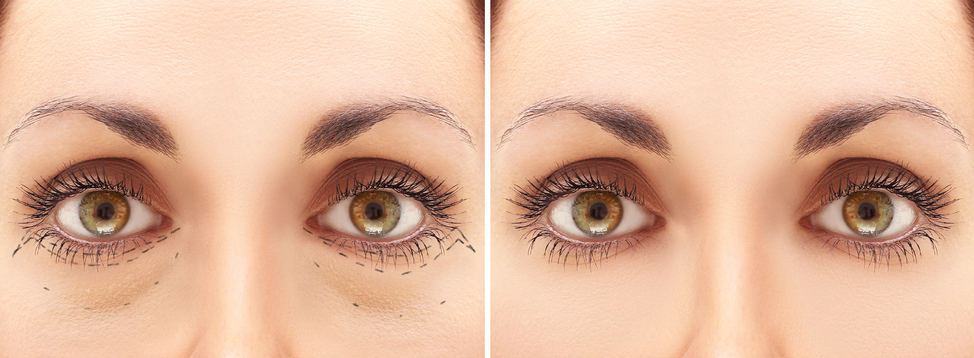Blepharoplasty Treatments from U.S. Dermatology Partners
What Is Blepharoplasty?
Blepharoplasty is also known as eyelid surgery or an eyelid lift. It is done to remove excess skin and fat in the upper eyelids. While most blepharoplasty patients are female (85% of blepharoplasty procedures in the US in 2014 were performed on women), more and more men are also seeing the benefits of tightening sagging skin around the eyes.

Blepharoplasty, or an eyelid lift, removes excess skin and fat from the upper eyelids.
Find This Service Near You
Who Is a Good Candidate for Blepharoplasty?

Blepharoplasty can address sagging skin in both the upper and lower eyelids.
Most people who have a blepharoplasty are 35 or older, but if you happen to have a genetic predisposition to baggy or droopy eyelids, you may require the surgery earlier in life. Although it is usually done for cosmetic reasons, it also can help improve vision in people who are having vision problems because of sagging in the upper eyelids.
As with any elective surgery, it is important to manage your expectations. While blepharoplasty can enhance your appearance, its focus is on improving baggy or droopy eyelids, and it will not change your overall facial structure. Typically, a blepharoplasty is not the best procedure for fixing wrinkles, dark circles and forehead issues. However, your doctor can help provide you with information on other procedures, like brow lifts and facelifts.
How Is Blepharoplasty Performed?
The blepharoplasty procedure typically takes about one hour. After using a local anesthesia to numb the eye area, your surgeon will make incisions that follow the natural lines of your upper eyelids, then remove excess fat, skin and muscle from them. The incisions may be closed with tiny stitches in the upper eyelids.
Are There Side Effects to Blepharoplasty?
As with all surgery, there are some risks to blepharoplasty. Upper eyelid surgery carries fewer risks than other surgical procedures, and risks usually include dry eyes and recurrence of the of the sagging eyelid problem.
However, in some cases, patients may experience side effects such as infection, bleeding, blurred vision, loss of eyesight and difficulty closing your eyes. That’s why it is important to discuss all of your concerns and options before making the decision to have blepharoplasty and to make sure that your surgeon is a skilled professional you trust.
How Long Does Blepharoplasty Last?

*Results may vary by individual
